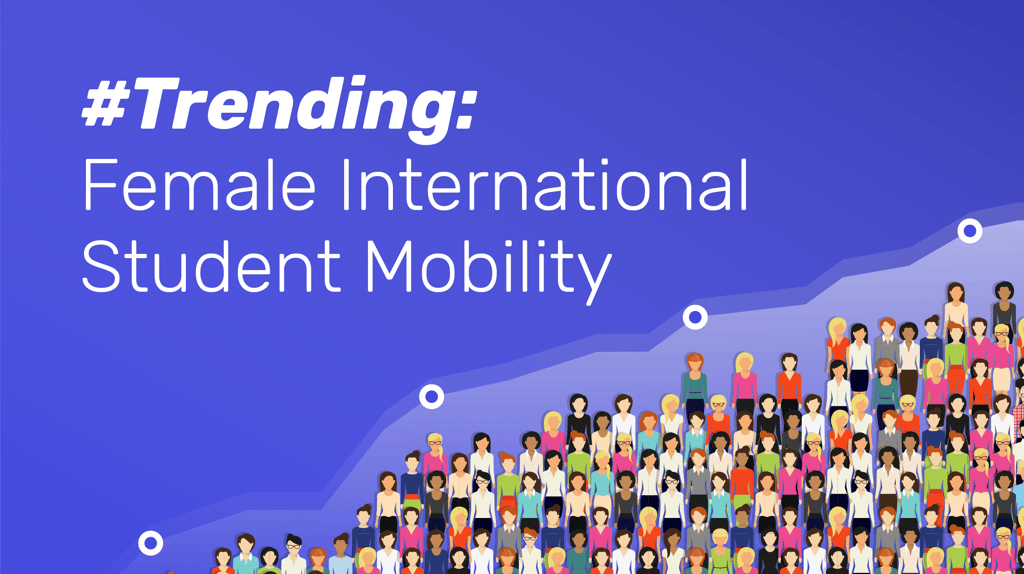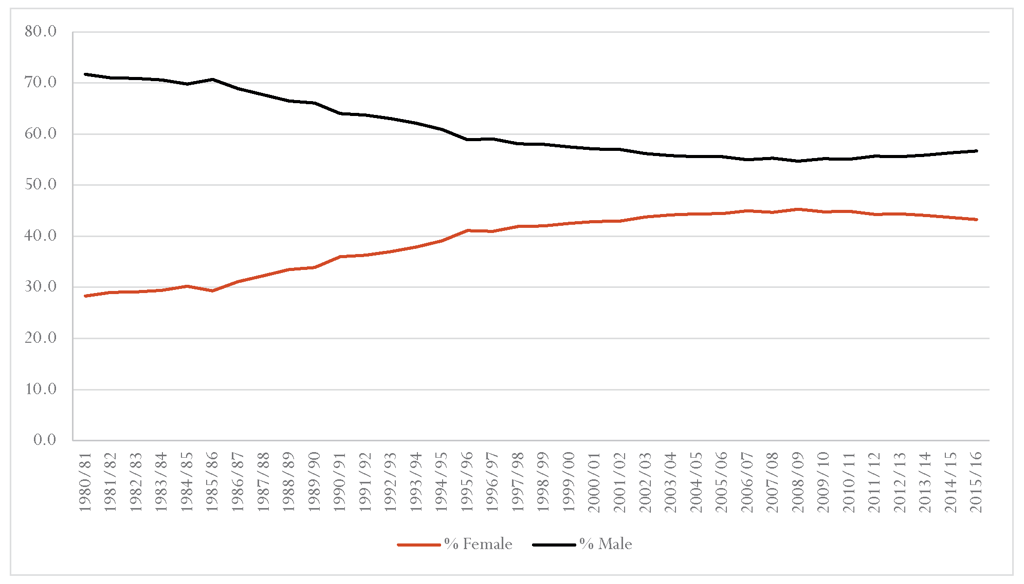
Right now it is common knowledge that more women are enrolling in higher education than ever before. But, did you know that global female enrollment in higher education has grown twice as fast as the rate of male enrollment in the last four decades? Women now outnumber men in higher education institutions in 114 countries.
The reasons for the large rate of growth for female enrollment are clear: increased access to university education for women, better financial situations and the global push to encourage female education. Here's the question: have you considered how to your institution's marketing approach addresses this trend? Are you speaking their language?
BOTTOM LINE: Women are outnumbering men in education institutions around the world, but there is still a gap between male and female international students studying in the U.S. There are still countries that tend to send more men abroad, particularly in the STEM fields. Encouraging more women to enroll in studies traditionally occupied by men and looking for insights from countries that are already sending more women abroad may give us some clues into how to encourage continued growth in the number of women studying in the U.S. and abroad. Read on to explore the growth trends and consider how to adjust your marketing approach to capitalize on the trend.
A 2017 report from the Institute of International Education (IIE) indicates that some regions are seeing a trend toward women studying abroad rather than in their home country. Sub-Sahara African women make up 43% of the students from the region currently studying abroad. This is compared to only 36% of female students who choose to remain home to study. Similarly, in Central and Eastern Europe, women account for 65% of those studying abroad and 55% of those who study in their country of origin. Interesting, no?
In East Asia, Latin America and the Caribbean, North America, Western Europe, and Central and Eastern Europe, more women go abroad for their studies than men. The chart below shows the percentage of the study abroad population that is female from each region.
| Region | Female % of Study Abroad Population |
|
East Asia |
53 |
|
South and West Asia |
27 |
|
Latin America and the Caribbean |
51 |
|
North America |
52 |
|
Western Europe |
54 |
|
Central and Eastern Europe |
65 |
|
Sub-Saharan Africa |
43 |
|
Arab states |
34 |
SOURCE: Institute of International Education, The Gender Dimensions of Academic Mobility
Clearly, more and more women are choosing to study abroad. The gap has also narrowed between the number of male and female students who choose the U.S. as their destination for higher education. As you can see in the chart below, during the school year of 1979/80, 28% of the international student population in the U.S. was female. By the 2014/15 school year that figure grew to 44%.
What happened between 2014/15 and 2015/16 to cause a dip in this number? Rising numbers in the STEM fields. This traditionally male-dominated field has seen substantial growth recently. Additionally, the U.S. international student market has seen growth from countries like India and Saudi Arabia -- countries that typically send more male students to the U.S.

Percent of male and female international students in the U.S. 1980-2016
SOURCE: IIE Open Doors
For U.S. recruitment, male international students still outnumber female students from most regions of the world. The only exception is North America where the split is 50/50. Asia, the recruiting hotspot, has some pockets that are also an exception to the regional rule. In Japan and in Vietnam, women make up 54% of the student population coming to the U.S. We featured Vietnam in a 3-part series in 2013, you can check it parts I, II and III on the Recruiting Intelligence blog. You can also learn about Japanese students’ motivations for studying abroad in this Intead blog post.
Motivations for Studying Abroad Point to Your Marketing Messaging
Improved access to education for girls and women at all levels has increased the opportunities in higher education for women. But, what makes women choose to travel abroad for their tertiary education? Financial capability, desire for better educational opportunities and changing cultures are among the main reasons women are looking at institutions abroad. Are you talking about this stuff? Website? Marketing collateral? Email campaigns? Social media? You know the drill: segment your audience and give them content that sings to them.
Go beyond the generic overtures and you'll beat more than 90% of the other institutions going after that same market segemnt.
Rapidly growing markets have given more students in countries seeing growth in middle-income families the chance to study abroad. For example, in China, where women account for 49% of students coming to the U.S., the number of Beijing families with daughters sending their students to the U.S. increased immensely between 2008 and 2012.
Along with the financial security to study abroad, many women choose to receive specialized training abroad that is not available or adequately provided in their home country. For example, some Iranian women have chosen to pursue STEM studies abroad because it is discouraged at home.
Cultural factors have also led to an increase in female student mobility. Chinese women have reported personal growth, the desire for a global experience and not having the constraint of marriage as motivators for studying abroad. Cultural shifts that have empowered women also allow women more freedom to study abroad.
Consider: Are these motivations messaging opportunities for your institution? How can you connect with the needs and desires of this target audience?
No matter how you look at it, women are playing a stronger role on university campuses, and this is a growing market that you may want to connect with in a very real way. Give them a reason to pay attnetion to the great opportunities your institution provides.
We would love it if you would take a moment to tell us in the comments how you focus international student recruiting efforts on women. If you are data driven (like us) you can also take a look at the full IIE report here.

